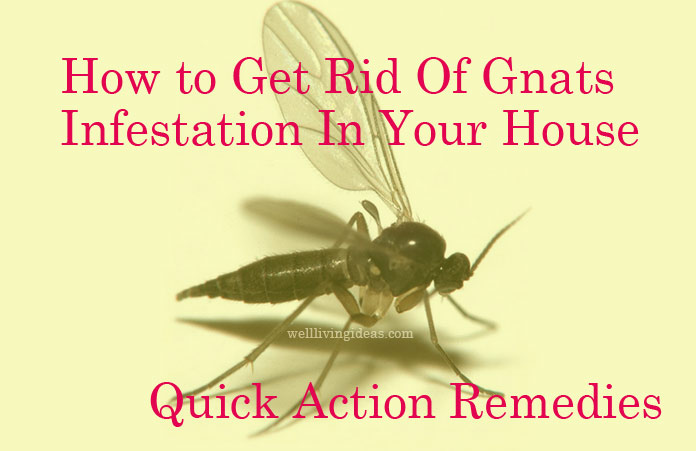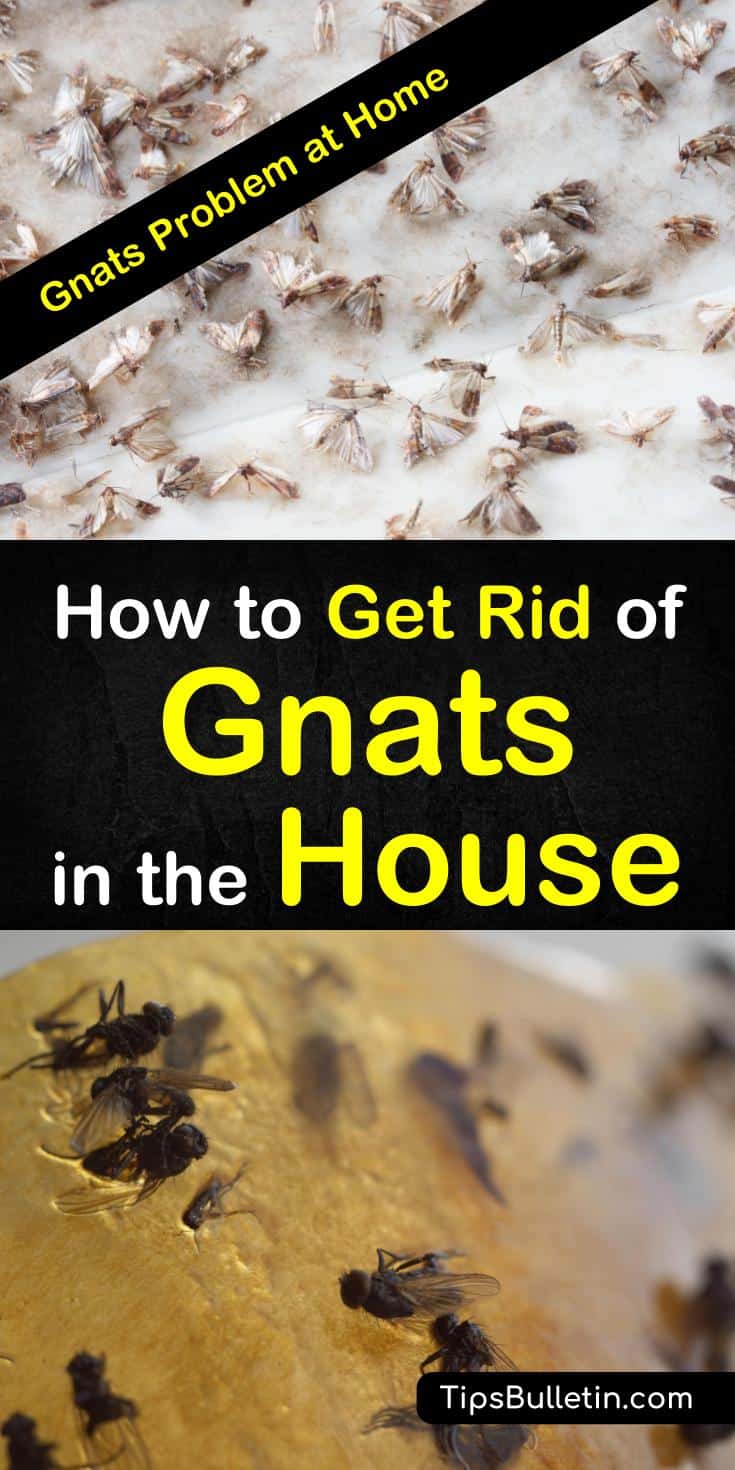Table Of Content

Here’s what to know about getting rid of everyone’s least favorite household pests. A gnat bite typically appears as a small, red, itchy bump on the skin, similar to a mosquito bite. Also, avoid wearing strong fragrances or scented lotions and use insect repellents, particularly during peak gnat activity periods. Finally, environmental changes such as landscaping or nearby construction can disrupt gnat habitats, causing them to seek refuge indoors. Gnats have a life cycle of 18 to 30 days, but they reproduce quickly and the infestation will last indefinitely until it’s handled.
'Fruit flies have cut down big time': Woman's ingenious device to eliminate fly problem - Express
'Fruit flies have cut down big time': Woman's ingenious device to eliminate fly problem.
Posted: Thu, 20 Oct 2022 07:00:00 GMT [source]
Preventative Measures to Keep Gnats Away
So, if you have even the slightest gnat infestation, it's important to get rid of them fast. They typically have slender, brown or black bodies and thrive where there’s moisture. They also prefer sand or sandy soil, meaning states like California and Florida can be particularly prone to gnats. Fruit flies are another pest commonly confused with interior or fungus gnats. Also called vinegar flies, they are tiny, around 1/16 inch (2 mm), with distinct red eyes and a mix of tan, black, and gray on their head and body.
Bleach Drains
To be sure your outdoor spaces are free of pesky pests, check out clever products that keep bugs away. Read on to learn about several additional methods that will help you get rid of gnats indoors. Gnat infestations in Arizona can be attributed to various factors. Weather conditions play a significant role, as gnats thrive in warm, moist environments.
Use sterile soil when potting indoor plants

This is a good way to remind your household to eat fruit before it starts to spoil. 'Vinegar traps can be made by placing a small amount of apple cider vinegar in a clear bowl or jar. Cover the top tightly with plastic wrap and poke several holes in the top, which will allow the adult gnats to enter but will not allow them out. Catching gnats in your house can be done by building a trap with dish soap, apple cider vinegar and sugar.
If you're experiencing an abundance of gnats in your house, several factors could be contributing to the problem. Gnats are attracted to warm, moist environments and breed in damp areas, so reduce or eliminate areas where water collects in your yard and house. These tiny flying insects are a nuisance, hovering around faces and swarming in large numbers. Aerosol sprays with pyrethrins are very effective at killing adult gnats, Schutter says. Clear your plants and soil of decaying leaves, flowers, or organic matter. Remove dead flowers, leaves, or other plant parts from your plants.
How to Get Rid of Stink Bugs in Your House
Bug zappers typically attract flying insects with a UV light, then trap and collect the small bugs. Most modern zappers are safe for indoor use, so you can plug one in adjacent to your gnat problem. If pests are hovering around the sink drain, grab a bottle of bleach and mix a half cup of it with a full gallon of water. Then, slowly pour the diluted mixture down the drain to kill any gnats and potential larvae. Alternatively, you can use a commercial drain cleaner to produce the same results.
Buy a bug zapper.
To eliminate your bug problem, you sometimes have to bring them right to you. Combine two tablespoons of apple cider vinegar, half a cup of warm water, six drops of dishwashing liquid and a tablespoon of sugar into a mixture. The sugar is especially important, as it will lure in the bugs, leaving them trapped in the sticky solution. Position a tall candle into a candlestick, before placing it in a small pan filled with water. Put your pan on the counter, add a bit of dish soap to the water and light the candle before turning the lights off.
Outdoor compost bins attract fungus gnats and provide favorable breeding conditions for the pests. The flies typically stay near the compost to feed, but they’re more likely to make their way inside if there are food sources indoors or if they see light coming from your living space. In a small bowl, mix a half cup of warm water plus two tablespoons of apple cider vinegar, a tablespoon of sugar, and about six drops of liquid dish soap. Gnats will be lured in by the sugary mixture, but once they dip in for a drink, the sticky dish soap will trap them. Simply place the bowl with solution in the areas where you've noticed the most gnats, and wait for results. If you have interior house plants and think you have fungus gnats but aren't sure, yellow sticky traps can be placed in your plant pots near the base of the plant.
If all else fails, or you’re not interested in making a DIY solution, try placing a store-bought fly trap such as flypaper, cards, or ribbons near where gnats gather. Some of these products are even designed to sit in the soil alongside a potted plant to catch fungus gnats. Once the sticky side is sufficiently filled, toss it and add a new one. You can also try a bug zapper that’s aimed at catching smaller insects or, if the problem really persists, call a reliable pest control company.
For best results, also scrub infested drain pipes with a wire brush and enzymatic cleanser. If the gnats are infesting your houseplants, you can either purchase a mild insecticidal spray or make one yourself. Fill an empty spray bottle with lukewarm water and mix in a few drops of mild dish soap. Spritz this lightly on gnat-infested plants, but be sure to come back two to three hours later to thoroughly rinse the leaves.
Look for leaky windows, roofs or other cracks that might be letting extra moisture into your home. Repairing these spots could reduce or completely eliminate your gnat problem, as they will lose their food source. Whether you're dealing with gnats or one of the many pests mistaken for them, you can prevent an ongoing issue by focusing on sanitation. Once the pest's food source or breeding site is cleaned up (or never allowed to linger in the first place), the issue should be resolved.
From hanging ribbons and cards to sticky stands specifically designed for potted plants, sticky traps are an easy way to catch a cluster of gnats. You'll just have to keep an eye on it and replace the trap once it's full. If you’ve tried these solutions with no luck, you’ll need to call in a professional pest control company to help address your gnat infestation. Gnats lay their eggs in the places they love to feed and hide, namely, dirty garbage disposals and drains, compost bins, garbage cans, and anywhere moist and humid. They will also lay eggs into rotting fruit and vegetables, including those in your fruit bowl or pantry. Peppermint oil is a great natural pest control option, especially when made into a bug spray with water and a few drops of liquid dish soap.
Gnats are primarily attracted to sweet and fruity scents, but many species of gnats are also drawn to water and body heat. Perspiration and even the moisture of your eyes and nose can draw in gnats. Fruits, vegetables and flowers growing in your garden or food residue in your sink can attract these pests. Knowing how to get rid of gnats completely will likely require multiple treatments and preventative measures. If these efforts don’t eliminate the gnats, you can also repot houseplants with sterile soil or treat them with a product containing BTI. Fungus gnats can sometimes enter your home when you bring in foreign plants.
Consistent efforts to remove breeding sites, use traps and maintain cleanliness are crucial for successfully eliminating a gnat infestation. Keep your kitchen clean because gnats are attracted to food scraps. This might be hard for some greenthumbs, but skip watering those plants.
If houseplants are the source of your gnat issue, kill off any larvae in the soil of your houseplants by digging down 2 to 3 inches and turning the top of the soil over. Place 1 to 2 inches of sand on top of the soil to discourage standing water and deter gnats from laying eggs. Gnats are attracted to damp spots to lay eggs, particularly affecting houseplants since they like to lay eggs in moist soil. A gnat infestation can damage some houseplants, causing wilting, loss of leaves, and leaf yellowing. Lucky for the gnats that want to move inside, many people have interior house plants, which provide fungus gnats with a year-round feeding and breeding source.

No comments:
Post a Comment